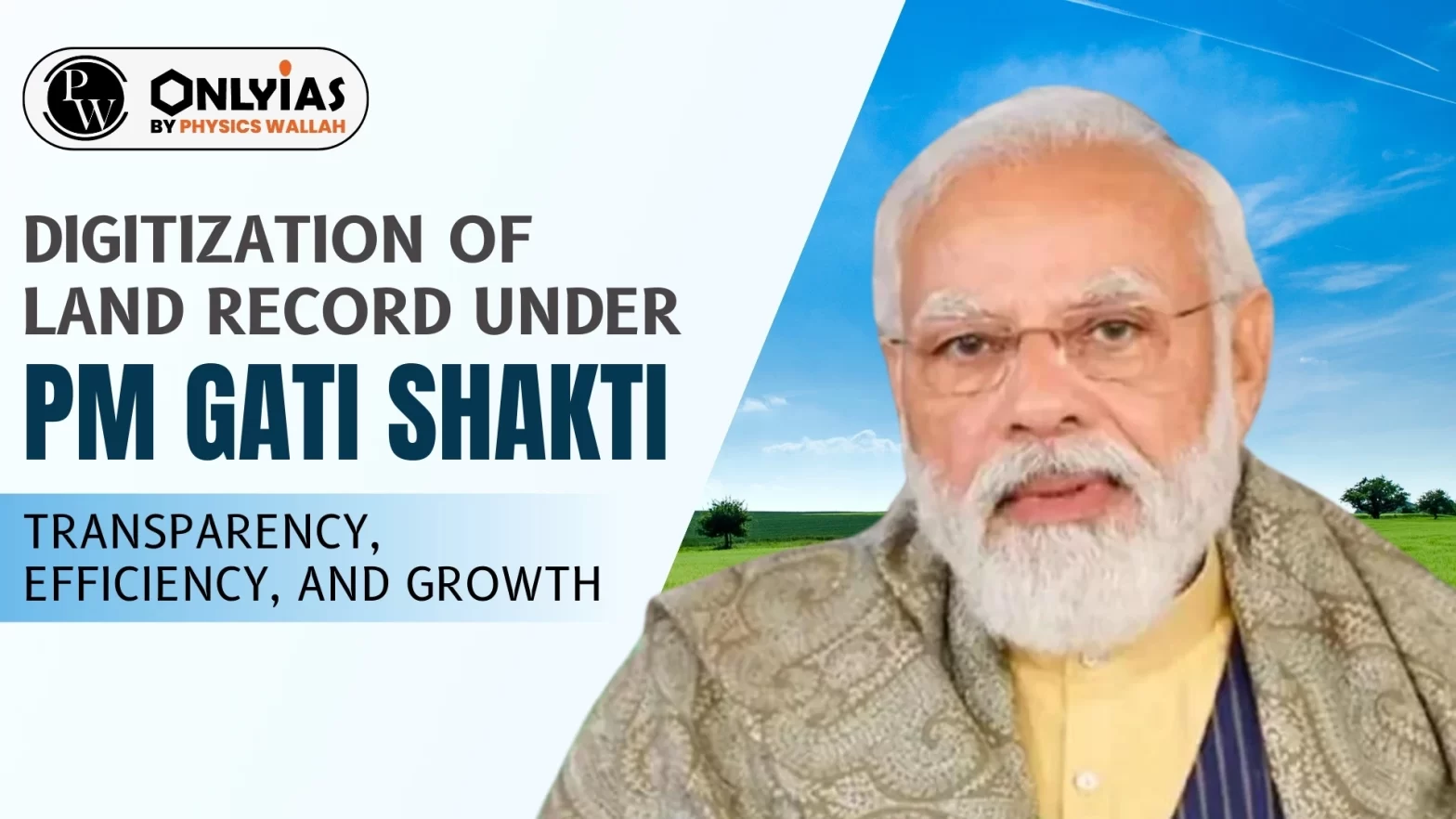Context: Recently, under the PM Gati Shakti National Master Plan, the digital land records of 13 major states and four Union territories (UTs) have been loaded onto the government’s platform.
- Now only six states—Himachal Pradesh, West Bengal, Uttarakhand, Sikkim, Nagaland and Meghalaya—and the UT of Lakshadweep remain to be digitally integrated.
| Relevancy for Prelims: PM Gati Shakti Scheme.
Relevancy for Mains: Land and its Digitization- its Need, Significance, Challenges and the Way Forward & Role of PM Gati Shakti. |
PM Gati Shakti’s Multimodal Vision and the Crucial Role of Digitized Land Records
- Multi-Modal Connectivity Scheme: PM Gati Shakti, announced in 2021, it is an ambitious scheme to ensure multimodal connectivity across the country.
- PM Gati Shakti covers everything from roads to railways and aviation to agriculture.
- The idea is to break departmental silos (involvement of multiple ministries) and institutionalize holistic planning for stakeholders across major infrastructure projects.
- Significance: PM Gati Shakti will save time and costs on project implementation.
- Need for Digitized Land Records (DLRs): DLRs should boost infrastructure development as the Gati Shakti platform makes use of this data.
Land Digitization in India: Necessity, Impact, and the DILRMP Initiative
- Land: A valuable resource for any nation, particularly for India where over half of the workforce is involved in agriculture. Hence, it is crucial to establish a modern, inclusive, and transparent land record management system.
- Importance of Land:
- Livelihood Source: A place to live and ensuring sustenance for individuals.
- Economic Impact: Facilitating industrialization and fostering economic growth.
- A Natural Resource: Encompassing minerals, water, forests, etc.
- Cultural Significance and Identity: A foundation for people’s identity and belonging.
- Implemented Program: The government restructured the National Land Record Modernization Programme (NLRMP) and introduced the Digital India Land Records Modernization Programme (DILRMP) in 2016 as a Central scheme with 100% funding.
Digitizing Land Records: Enhancing Transparency and Mitigating Litigation Risks
- Transparency: Improve the quality and accessibility of land records by digitizing them and linking them to spatial data and other databases such as Aadhaar, tax records, etc.
- Reduce Litigation: It can reduce the scope and frequency of such disputes by providing clear and secure ownership rights that are backed by the government.
Key Features of DILRMP in Revolutionizing Land Records Management
- A Unique Land Parcel Identification Number (14-digit alphanumeric ULPIN).
- A National Generic Document Registration System (NGDRS) to address registration procedures.
- Transliteration of Records of Rights (all 22 scheduled languages) to overcome linguistic barriers.
- Enhanced Services such as issuing caste, income, and domicile certificates, along with online access to crop profiles, crop insurance, and e-linkages to credit facilities.
Benefits of DILRMP in Advancing Land Record Digitization
- Improved Quality & Accessibility with more reliable and transparent land data.
- Reduced Litigation & Frauds by having clear ownership proof supported by the government.
- Promotion of Development & Growth as DILRMP attracts foreign investment, drives industrialization and stimulates growth.
Overcoming Hurdles: Challenges in Digitizing Land Records in India
- Lack of Coordination among units of Indian Federation
- Insufficient Resources and Capacity at various levels
- Lack of Awareness and Stakeholder Participation
Strategies for Future Success in Land Record Digitization
- Enhancement of Coordination among States: To harmonize land laws and policies, to share best practices and experiences and to attract investment and promote growth.
- Maintenance of Transparency and Accountability: By using strict action against sabotage or manipulation and establishing a Grievance Redressal Mechanism to establish public confidence.
- Appropriate and Sustainable use of Resources and Human Assets by mobilization and sufficient allocation, training and capacity building programs.
- Also, the focus should be on Public-Private Partnerships (PPP) for efficient service delivery and better implementation.
- Stakeholder Awareness and Participation by empowering marginalized sections of society, addressing the concerns and encouragement of active involvement.
- More awareness campaigns and sensitization programs should be conducted to inform stakeholders
News Source: Livemint
![]() 15 Dec 2023
15 Dec 2023

